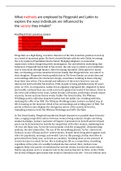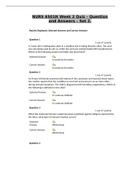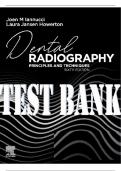Other
F. Scott Fitzgerald and Philip Larkin Context in Society
- Institution
- PEARSON (PEARSON)
- Book
- The Whitsun Weddings
Societal, political and historical context surrounding Philip Larkin and F. Scott Fitzgerald's lives and their influences when writing their books 'The Whitsun Weddings' and 'The Great Gatsby' as in the 'Varieties in Speech and Writing' module in Pearson's English Language and Literature A-Level.
[Show more]






